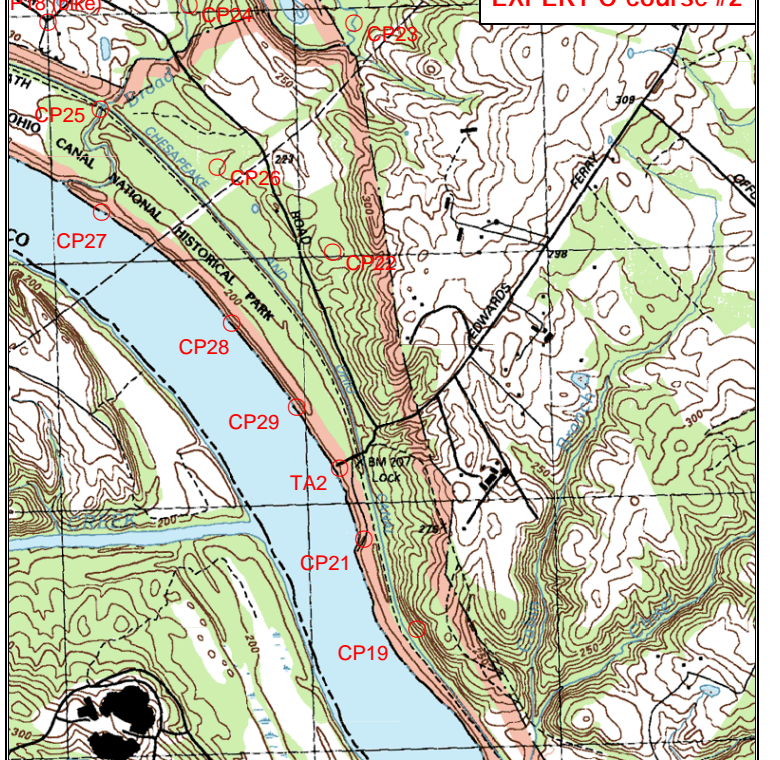First some definitions for new racers:
- "CP" means Check Point
- "MCP" means Mandatory Check Point
- "OCP" means Optional Check Point
- "TA" means Transition Area
 Maps
Maps are based on standard USGS quads and each map corresponding to a particular segment of the
race. On a map all these CPs and TAs are shown by circles with some letters and numbers.
Some CPs and TAs could be in the same location, some could be numbered and some just have a single letter for identification. As you approach a CP during the race you are looking for a standard orienteering white-orange flag that looks like this:
Near the flag will be a puncher, where you have to punch your passport.
All TAs and some CPs will be manned.
In this case, race officials will sign your passport and you don't need to
punch it. No flags are located on manned CPs. At Transition Area's, you will
switch from one discipline to another (for example from bikes to canoes).
After the race check in, you will
receive a set of maps and rules of travel. All maps will be custom made by
Calleva at various scales and printed on waterproof paper. It is going to be
your responsibility to protect these maps against the elements.
All CPs are preplotted on the maps
as circles. Most of the circles are red, but some may have different colors
depending on the map background. The orienteering flag is always located inside
the circle, but sometimes a little off from the center. That is the reason for
different circle sizes on the maps. You always are able to see the flag from
the center of the circle, but sometimes will have to overcome some obstacles to
get it.
Some portions of the race course
changed since the last update of the maps by USGS. You might see some trails
and/or roads that are not on the map. All CPs are connected to some well-defined
features. If the feature is not on the map, additional information will be
provided in the rules of travel and/or in the clue sheet.
Check Points are the places where
you will punch your Passport or where a race official will
sign your progress along the course. It will be also your clue sheet, but you
will receive it only after the start of the race. On every transition area you
have to present your passport twice: once to check in and once to check out. It
is the racers responsibility to get all signatures in the passport. It is
racers responsibility to punch the passport in the correct location. Passport
will be printed on waterproof paper, but is still better to keep it out of the
water. You might have a few different passports during the race for different
sections of the event.
Rules of Travel is a detailed instruction of how to go along the race course. It will describe every section of the race and the means of travel between all Check points and Transition areas. All forbidden and mandatory routes, cut-off times, special equipment for each section of the race and all other details will be presented there. This is a very important document and all teams must spend some time to understand it. It will be printed on a few pages of regular paper and it is going to be the racers responsibility to protect it against the elements. You will receive the rules of travel together with the maps after teams check in the morning of the race.
 Maps are based on standard USGS quads and each map corresponding to a particular segment of the
Maps are based on standard USGS quads and each map corresponding to a particular segment of the 










